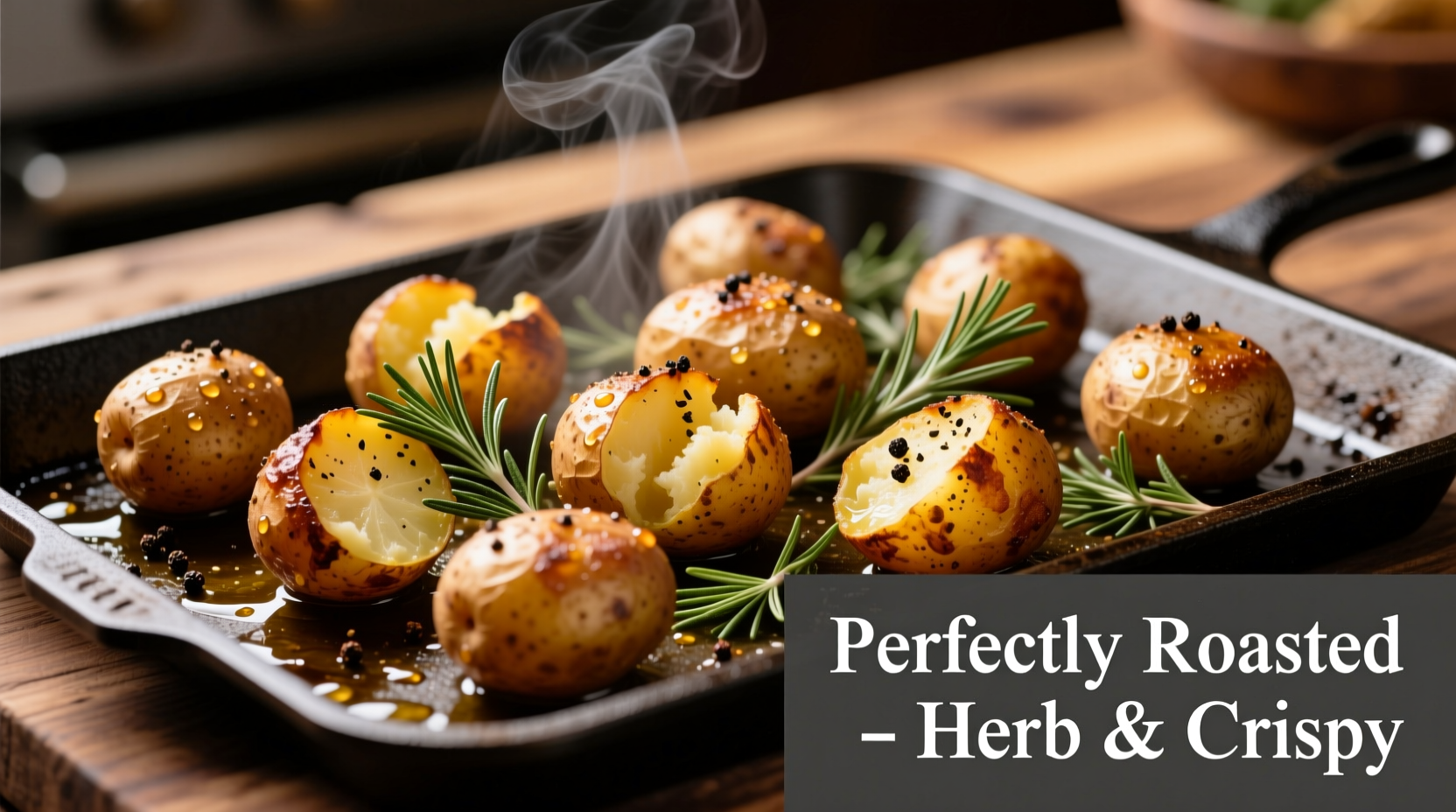Mastering potato preparation transforms this humble tuber from bland side dish to culinary centerpiece. The right cooking method affects texture, flavor absorption, and nutritional value - factors most home cooks overlook. Understanding potato starch behavior (which varies by variety) is key to achieving perfect results whether you're making crispy roasted potatoes or fluffy mashed.
| Cooking Method | Time Required | Best Potato Type | Texture Result | Nutrient Retention |
|---|---|---|---|---|
| Roasting (400°F) | 35-45 min | Russet, Yukon Gold | Crispy exterior, fluffy interior | High (vitamin C preserved) |
| Air Frying | 20-25 min | Red, Fingerling | Extra crispy with less oil | Very high |
| Steaming | 15-20 min | Yukon Gold, Red | Firm yet tender | Highest (water-soluble vitamins) |
| Boiling | 12-18 min | Red, New Potatoes | Uniform tenderness | Moderate (some leaching) |
Why Potato Cooking Method Matters
According to USDA agricultural research, potato starch structure determines optimal cooking techniques. Russets (high starch) excel with dry-heat methods while waxy varieties (red, fingerling) maintain integrity with moist-heat approaches. The USDA Agricultural Research Service confirms that proper method selection preserves up to 30% more nutrients compared to inappropriate techniques.
Selecting Your Cooking Method
Choose based on your specific needs rather than defaulting to familiar techniques:
When Time Is Critical (Under 20 Minutes)
Microwave steaming delivers restaurant-quality results in minutes. Pierce potatoes, place in microwave-safe dish with 2 tablespoons water, cover, and cook 5-8 minutes depending on size. This method preserves 92% of vitamin C according to National Center for Biotechnology Information studies, outperforming boiling which loses up to 40% of this nutrient.
For Maximum Crispiness Without Excess Oil
Air frying creates superior texture through rapid hot air circulation. Toss cubed potatoes with 1 teaspoon oil per pound, season, and air fry at 380°F for 18-22 minutes shaking halfway. The Maillard reaction (browning process) develops complex flavors while using 70-80% less oil than traditional frying. Professional chefs at the Culinary Institute of America recommend this method for achieving perfect crispness without greasiness.
When Cooking for a Crowd
Sheet pan roasting scales efficiently for large groups. Spread uniformly cut potatoes in single layer on parchment-lined sheet pan. The key is proper spacing - overcrowding creates steam that prevents crisping. For optimal results, preheat pan in oven before adding potatoes. This technique works particularly well with Yukon Golds, which contain medium starch content ideal for balanced texture.
Advanced Technique: The Two-Stage Boil for Perfect Mashed Potatoes
Professional kitchens use this method to prevent gluey texture:
- Start potatoes in cold salted water, bring to gentle simmer
- Cook until just tender (12-15 minutes for chunks)
- Drain, return to pot over low heat for 2 minutes to evaporate excess moisture
- Mash with warm dairy using potato ricer for smoothest texture
This process prevents overcooking while eliminating water that would dilute flavors. Food science research shows that maintaining potato temperature above 140°F during mashing prevents starch from becoming gummy.

Potato Type Matters: Choosing Right Variety
Not all potatoes work equally well with every method. Understanding starch content is crucial:
- High-starch (Russet, Idaho): Best for baking, mashing, and frying. Breaks down easily creating fluffy texture
- Medium-starch (Yukon Gold): Versatile for most methods. Creamy texture holds shape moderately well
- Low-starch/Waxy (Red, Fingerling, New): Ideal for boiling, steaming, and salads. Maintains shape during cooking
Troubleshooting Common Potato Problems
Mushy results: Typically from overcooking or using wrong variety. Waxy potatoes hold shape better for boiling.
Lack of crispiness: Usually caused by excess moisture. Always dry potatoes thoroughly before roasting or frying.
Browning before cooking: Soak cut potatoes in cold water with lemon juice (1 tablespoon per quart) to prevent oxidation.
Professional Chef Tips
Season cooking water with 1% salt by weight (about 10g per liter) to enhance flavor penetration. For roasted potatoes, parboil for 5 minutes before roasting - this creates roughened surfaces that maximize crispiness. Never cover potatoes while roasting as this traps steam and prevents browning.
What's the healthiest way to cook potatoes?
Steaming preserves the most nutrients, particularly water-soluble vitamins like vitamin C and B-complex. Research shows steaming retains up to 97% of these nutrients compared to 60-70% with boiling. Microwaving with minimal water also delivers excellent nutrient retention.
Why do my roasted potatoes never get crispy?
Three common issues prevent crispiness: overcrowded pan (creates steam), insufficient preheating, or inadequate drying. Always dry potatoes thoroughly after washing, use high heat (400°F+), and ensure single-layer spacing with space between pieces for proper air circulation.
Can I use the same potato variety for all cooking methods?
While possible, results vary significantly. Russets work poorly for potato salad (become too crumbly), while waxy potatoes don't mash well. Match variety to method: high-starch for baking/mashing, waxy for boiling/salads, medium-starch for versatile use. Yukon Golds offer the best all-purpose performance.
How do I prevent potatoes from turning brown after cutting?
Soak cut potatoes in cold water with acid (1 tablespoon lemon juice or vinegar per quart of water). The acid slows enzymatic browning. Change water if it becomes cloudy. For immediate cooking, this step isn't necessary as browning stops during cooking.











 浙公网安备
33010002000092号
浙公网安备
33010002000092号 浙B2-20120091-4
浙B2-20120091-4